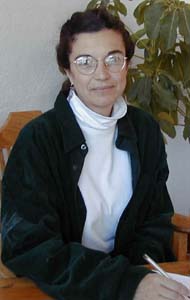Histograms of Spectra: Page 3.4
 |
Hola! My name is Patricia Carral. I'm an astronomer and teacher from Los Estados Unidos de Mexico. I live in Mexico with my husband and young son. I may not be famous, but there are many more like me, in universities and observatories around the world. We make important contributions to astronomy, and we love what we do! I study stars and galaxies that emit radio waves. Did you know that radio waves are a kind of light too? We make histograms of radio spectra just the way other astronomers do with visible light.
I hear you've been studying spectra and histograms of different light sources. I have a task for you that is about learning what a source is made of. I want you make the histograms for some new sources, based on the sources you've studied so far.
(By the way, astronomers generally use the word spectrum to talk about both the separated light and the histogram that represents this. We'll start doing this now.)
To Do: Experiment with adjusting each of the color cards below to the intensity you want. You may have to use the scroll bar at the bottom of the window to get some of the color cards on the screen. The graph below will show you the different intensities of color that you have chosen. Re-create some of the histograms for sources you've already studied, using your notes on the color intensities.


